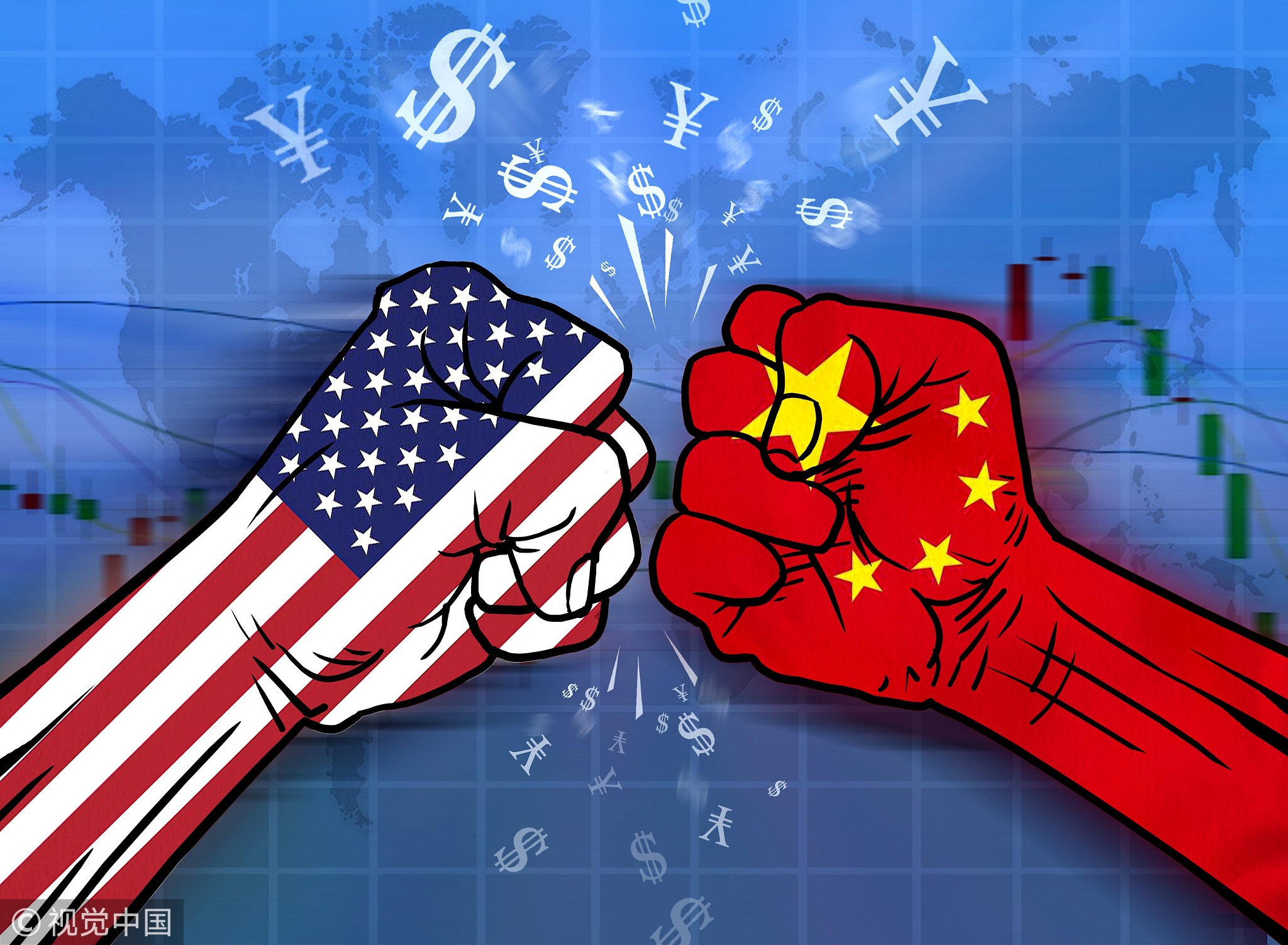
Opinions
15:32, 26-Nov-2018
Opinion: How will the major world powers respond to the general economic downturn?
Updated
15:27, 29-Nov-2018
Ken Moak

Editor's Note: Ken Moak, co-author of the 2015 book "China's Economic Rise and Its Global Impact," taught economic theory, public policy and globalization at university level for 33 years. This article reflects his opinion, and not necessarily the views of CGTN.
Perhaps a re-visit of history might shed light on why the world economy is moving downwards. It began in 2008 at the aftermath of the U.S.-originated financial crisis, sinking six of the seven G7 nations (besides for Canada) into a Great Recession, growing at between -0.5 percent to -0.7 percent, from which they are still struggling to escape according to the International Monetary Fund.
Using a variety of fiscal and monetary instruments to revive the economy, G7 nations (again, excepting Canada), turned to quantitative easing (QE), central banks printing money to buy sovereign debts. The intended purpose of QE was to spend the sales proceeds on reviving the economy and creating employment. Instead, particularly the U.S. spent the money to bail out banks and enterprises deemed “too big” to fall.
Instead of leading the money to investors and consumers, banks used it to pay off liabilities from creating and selling financial derivatives. They used the same assets as collateral, a process amounting to selling the same products many times. Enterprises spent the money on machinery retooling and job automation instead of expanding production and employment. The net result was protracted economic stagnation or slow growth.
Blame globalization and “unfair” trade practices
The protracted period of economic downturn gave rise to populism and protectionism in the West. Politicians responded by restricting imports with non-tariff barriers such as anti-dumping measures, particularly against Chinese products. Perhaps most damaging to the world economy is U.S. President Donald Trump's trade war against China and other countries.

VCG Ph
VCG Ph
Impacts of U.S.-China trade war
However, trade wars or protectionism risk global eco-geopolitical stability further. For example, the trade war with China amounts to adding taxes on U.S. goods, leading to higher production costs and consumer prices in America. Also, tariffs amount to protecting inefficiency, leading to lower productivity and competitiveness.
According to Bank of America analysts, Trump's trade war scared investors away, preventing the 800 billion U.S. dollars stock buyback from halting the downward slide. Indeed, Apple lost 20 percent of its value in spite of a 100 billion U.S. dollars stock buyback.
U.S. government organizations such as the Federal Reserve (U.S. central bank) are predicting an economic slowdown less than three percent for 2018 and beyond.
The question is: How will major powers respond to the global economic downturn?
Though Trump administration's policies are counterproductive (and he probably knows it), they still have supporters, who were displaced by U.S. business' decisions to relocate manufacturing abroad and automate jobs at home. His supporters only see China and other countries are producing the products they used to make. The U.S. Congress is even more “hawkish” on the Asian giant than Trump. In this regard, there is little chance that the U.S. president would call off the trade wars unless China capitulates, a very unlikely prospect.
China, on the other hand, is doing the opposite: further reforming its economy, mounting stimulus packages, reducing tariffs, creating platforms such as China International Import Expo (CIIE) and promoting the Belt and Road Initiative (BRI) to reverse the economic downturn.

China International Import Expo is held between November 5 and 10 in Shanghai, China /VCG Photo
China International Import Expo is held between November 5 and 10 in Shanghai, China /VCG Photo
For example, more countries, including strong U.S. allies India, UK and Canada, are or interested in joining the BRI because the proposed over one trillion U.S. dollars of infrastructure investment and increased trade have benefited many participating countries.
In early November, about 3,600 foreign enterprises from 170 countries, regions and international groups, including 180 from the U.S., participated in the CIIE. The event ended up with deals worth of 58 billion U.S. dollars. China also pledged to import over 30 trillion U.S. dollars of goods from around the world over the next 15 years.
However, China's manufacturing comparative advantage is “scaring” developing and developed nations. India, for example, is imposing tariffs on a variety of Chinese products to protect its “infant” and inefficient industries. The EU is routinely applying anti-dumping duties on Chinese products for the same reason. But at the same time, they support China's efforts in promoting economic globalization, fully aware that protectionism is a “dead end”.
A comment
For all globalization's flaws, it benefits the world more than it costs because it is taking advantage of each country's comparative advantage, importing the goods in which it has higher production costs and exporting those it enjoys lower costs. Unfettered trade thus increases economies of scale, productivity and competitiveness, fostering economic growth and reverse downturns. For this reason, China and many major economies will likely walk the globalization path.
(If you want to contribute and have specific expertise, please contact us at opinions@cgtn.com)

SITEMAP
Copyright © 2018 CGTN. Beijing ICP prepared NO.16065310-3
Copyright © 2018 CGTN. Beijing ICP prepared NO.16065310-3